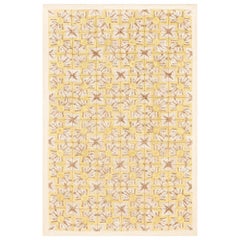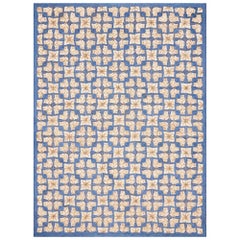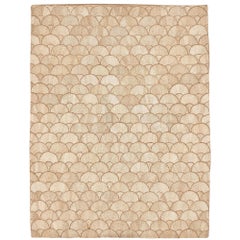Abaca Patterson Flynn
21st Century and Contemporary Philippine Modern Chinese and East Asian Rugs
Hemp
Recent Sales
21st Century and Contemporary Philippine Modern Chinese and East Asian Rugs
Hemp
21st Century and Contemporary Philippine Modern Chinese and East Asian Rugs
Hemp
People Also Browsed
2010s French Art Deco Wall Lights and Sconces
Plaster
2010s European Mid-Century Modern Wall Lights and Sconces
Brass, Sheet Metal
Late 20th Century Modern Console Tables
Maple
Antique Late 19th Century Swedish Gustavian Side Tables
Porcelain, Wood, Paint
21st Century and Contemporary Asian French Provincial Console Tables
Wood
Early 20th Century British Egyptian Revival Benches
Cane, Beech
21st Century and Contemporary French Mid-Century Modern Chandeliers and ...
Metal
Early 2000s European Gustavian Commodes and Chests of Drawers
Brass
Antique Late 19th Century English Arts and Crafts Stools
Walnut
21st Century and Contemporary Thai Pillows and Throws
Linen
21st Century and Contemporary English Art Deco Lanterns
Brass
Antique Early 19th Century Swedish Gustavian Secretaires
Brass
21st Century and Contemporary Turkish Kilim Western European Rugs
Wool
Early 20th Century British Arts and Crafts Lanterns
Brass
Early 2000s Unknown Country Farm Tables
Wood, Elm
Antique Late 19th Century French Industrial Shelves
Beech
Schumacher for sale on 1stDibs
Schumacher is an esteemed American textile company known for its fine pillows, wallpaper and carpets. The family-owned business is still managed by its founder’s descendants. While committed to its history and traditions, the brand has evolved to maintain its vaulted status for more than 130 years.
Schumacher was established in 1889 in New York by Frederic Schumacher, who was born in France and moved to America that same year. By 1898, the Gilded Age elite were patrons of the company’s exquisite imported European fabrics. Schumacher became one of the first to produce luxury textiles in America and its fabrics began appearing in upscale properties like the Waldorf-Astoria hotel.
Schumacher grew in prestige in the early 20th century due to its partnerships with top designers such as Josef Frank and Dorothy Draper. Its textiles graced the White House and captured the attention of leading decorators, including Edith Wharton and Elsie de Wolfe.
In the 1920s, Schumacher was a favorite at Mar-a-Lago estates and Newport’s ritzy summer cottages. In the 1930s, French fashion designer Paul Poiret helped usher in the company’s Art Deco era. Schumacher textiles could be found on the sets of Hollywood films, most notably the Hydrangea Drape wallpaper in Gone with the Wind.
After World War II, Schumacher began a decades-long partnership with designer Vera Neumann, whose scarves were worn by the likes of Marilyn Monroe and Grace Kelly. In 1955, legendary architect Frank Lloyd Wright developed a textile line with Schumacher. Known as the Taliesin line, it was the first commercial venture of the architect’s career.
In 2011, Andrew and Stephen Puschel became the fifth generation of Schumacher’s descendants to join the family business. The company continues to exemplify a spirit of innovation by partnering with exciting modern designers like Miles Redd, Mary McDonald, David Kaihoi, Veere Grenney and David Oliver. Under the creative direction of Dara Caponigro, Schumacher has also partnered with the biannual luxury interiors magazine Cabana.
On 1stDibs, find Schumacher textiles, wall decorations, rugs and more.
A Close Look at Modern Furniture
The late 19th and early 20th centuries saw sweeping social change and major scientific advances — both of which contributed to a new aesthetic: modernism. Rejecting the rigidity of Victorian artistic conventions, modernists sought a new means of expression. References to the natural world and ornate classical embellishments gave way to the sleek simplicity of the Machine Age. Architect Philip Johnson characterized the hallmarks of modernism as “machine-like simplicity, smoothness or surface [and] avoidance of ornament.”
Early practitioners of modernist design include the De Stijl (“The Style”) group, founded in the Netherlands in 1917, and the Bauhaus School, founded two years later in Germany.
Followers of both groups produced sleek, spare designs — many of which became icons of daily life in the 20th century. The modernists rejected both natural and historical references and relied primarily on industrial materials such as metal, glass, plywood, and, later, plastics. While Bauhaus principals Marcel Breuer and Ludwig Mies van der Rohe created furniture from mass-produced, chrome-plated steel, American visionaries like Charles and Ray Eames worked in materials as novel as molded plywood and fiberglass. Today, Breuer’s Wassily chair, Mies van der Rohe’s Barcelona chair — crafted with his romantic partner, designer Lilly Reich — and the Eames lounge chair are emblems of progressive design and vintage originals are prized cornerstones of collections.
It’s difficult to overstate the influence that modernism continues to wield over designers and architects — and equally difficult to overstate how revolutionary it was when it first appeared a century ago. But because modernist furniture designs are so simple, they can blend in seamlessly with just about any type of décor. Don’t overlook them.
Finding the Right Chinese-rugs for You
Antique and vintage Chinese and East Asian rugs and carpets often include images of trees, animals and abstract forms. A colorful carpet offers a focal point for conversation and curiosity.
China has a long history of rug making. Some Chinese carpets date back thousands of years. Many designs resemble delicate Chinese porcelain, such as those with depictions of vines, plants and flowers. Others are pictorial with mythical creatures, local animals and people, while others have shape-based designs featuring lovely geometric patterns.
Small prayer rugs or larger pieces with audacious patterns and colors can be a meaningful part of any collection. Neutral-toned rugs predominated interior design for a while, but bolder is better. Through fine materials and vibrant hues, one is drawn into the stories of beautifully woven rugs from China and East Asia.
Wool, silk and chinoiserie rugs add grace to rooms by contrasting or complementing antiques and modern furniture. By pairing Chinese rugs from the 1960s with your mid-century modern credenza or coffee table, you can create a synthesis of modern American design with a sensibility toward materials more commonly associated with an Asian tradition of craft.
Explore the beauty of antique and vintage Chinese and East Asian rugs and carpets through an extensive collection on 1stDibs. Find the perfect floor covering for your home, office or other space.


